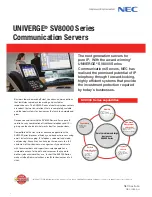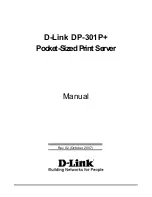
6
EKOSync 1588A User Manual rev 1.1
August 2021
Impedance
50 Ω
II. OPERATION DESCRIPTIONS
1
Precise Time Synchronization
Precision Time Protocol (PTP), included in IEEE standard 1588 was originally designed to provide
timing for critical industrial automation. PTP identifies two types of clocks, masters and slaves. A clock
in a terminating device is known as an ordinary clock, a clock in a transmission component like an
Ethernet Switch as a boundary clock. A master which is controlled ideally by a radio clock or a GPS
receiver, synchronizes the slaves connected to it respectively.
PTP time server, namely GPS Clock, which provides synchronization in PTP (IEEE 1588) protocol on
Ethernet network by using time from GNSS satellites utilizes existing data network so that an
installation of a separate timing network is eliminated. Its 25ns accuracy and redundancy
mechanisms are also advantages of new generation synchronization system.
Control, protection and measurement devices in modern electric grids need correct time for
synchronous operation. To identify the sequence of events in case of unexpected outage, to
manage the grid synchronously and to be able to make the measurements in the required accuracy
a modern synchronization protocol is needed.
The IRIG-B Time Code Standard
IRIG‐B is the industry standard for GPS time synchronization. The IRIG time codes were originally
developed by the Inter-Range Instrumentation Group (IRIG), part of the Range Commanders
Council (RCC) of the US Army. IRIG time code B is widely used in the electrical power industry.
IRIG-B refers to a serial time code format. The IRIG-B time code consists of 100 bits produced every
second, 74 bits of which contain various time, date, time changes and time quality information of
the time signal. IRIG-B sends Day of Year, Hour, Minute and Second data on a 1KHz carrier, with an
update rate of one second. IRIG-B DCLS (DC level shift) is IRIG-B without the 1KHz carrier.
There are three methods of communicating analogue pulses in the IRIG Standard:
• Modulated : amplitude-modulated, sine wave carrier
• Unmodulated :DC level shift, no carrier signal
• Modified Manchester : amplitude-modulated, square wave carrier
Three types of coded expressions are used in the IRIG standard:
Binary Coded Decimal time-of-year (BCDTOY) and year (BCDYEAR)
Control Functions (CF), set of bits reserved for user applications
Straight Binary Seconds (SBS) time-of-day (0 to 86400 seconds)








































